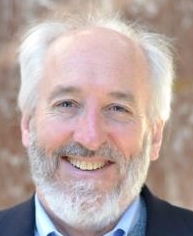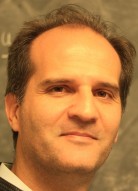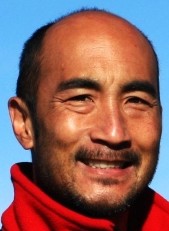The Fall Semester is off and running, and while classes are back in session, SoMAS faculty are bringing in research awards!
Dr. Paul Shepson has received a new award from NSF’s Office of Polar Programs, in support of the project: “Collaborative Research: CHemistry in the Arctic-Clouds, Halogens, and Aerosols (CHACHA),” in the amount $2,388,634 for the period 09/15/2020 to 08/31/2024. This is a collaborative grant, with co-PIs from Penn State, SUNY Albany, Purdue, University of Michigan, and University of Alaska Fairbanks. A project abstract is provided below.
This project aims to improve understanding of atmospheric chemistry in the Arctic that impacts ozone, particulate matter, and cloud chemical composition, in the context of a rapidly changing Arctic. The atmosphere rids itself of pollutants by converting them into water-soluble products that are then removed through precipitation (rain or snow) or by deposition to the surface. This chemical conversion of pollution is achieved through a sunlight-driven (photochemical) process known as oxidation. In the atmosphere the most important oxidizing agent is the hydroxyl radical, OH. While in cold polar atmospheres, production of OH is slow, in snow/ice-covered regions the production of highly reactive halogen atoms, i.e. chlorine (Cl), bromine (Br), and iodine (I), can be rapid. These atoms can destroy ozone (a greenhouse gas and important oxidizing agent) and convert elemental mercury (Hg) in the atmosphere to oxidized Hg that then is deposited to the surface where it can be an environmental toxin. These processes dominate atmospheric oxidation chemistry near the ice and snow surfaces in the Arctic Ocean region. However, most of the information about the photochemical mechanisms and reactive chemical species concentrations comes from measurements made at the surface in Arctic coastal environments. In this project, the CHACHA team plans to conduct airborne measurements, in February – April of 2022, of halogens and other relevant chemical species as they exist within the gas phase, within suspended particles, and within cloud droplets around the Chukchi Sea, the Beaufort Sea, and the Alaska North Slope region. They will use two instrumented aircraft – the University of Wyoming King Air, and the Purdue University Airborne Laboratory for Atmospheric Research (“ALAR”). They plan to sample the halogen-containing gases, particles, and clouds in regions that are rapidly changing – above and downwind of sea ice “leads” (areas of open water in otherwise sea-ice-covered ocean regions), and downwind of sources of combustion-derived pollutants (nitrogen oxides and sulfur dioxide) along the coast of Alaska’s North Slope Region. This will be the first time anyone has carried out extensive airborne measurements of halogen gases, particles, and cloud droplets in the Arctic, and should represent a substantial step forward in our understanding of how the atmosphere cleans itself in polar regions, including in the vicinity of the Arctic Ocean along Alaska’s coastline. To further improve understanding of the Arctic atmospheric environment, the PIs and their students will develop atmospheric numerical models to simulate the observed concentrations of chemical species, and these models will be shared with atmospheric and Arctic science communities. The team, composed of researchers at six United States universities (in Alaska, Indiana, Michigan, Pennsylvania, and New York), will engage and mentor a diverse group of undergraduate and graduate students and postdoctoral scholars in this project. They will also engage in a number of additional education and outreach activities, via their previously developed ArcticStories website, middle-school science events, summer undergraduate research opportunities, TV shows, and social media, to discuss their research to improve public awareness, and for improved retention and engagement of underrepresented groups in science-related activities. At the invitation of the Ukpeaġvik Iñupiat Corporation (UIC) Science, the CHACHA team will hold an “aircraft open house” during the measurement study, and they will participate each year in the annual three-day Science Fair in Utqiaġvik, AK that involves K-12 students and the community, which is majority Iñupiat. Overall, this project will enable the United States to better understand how rapid change in the Arctic impacts the chemical composition of the atmosphere and to translate what was learned to other regions, including the atmosphere above the world’s oceans and in Earth’s upper atmosphere.
Dr. Pavlos Kollias and Dr. Mariko Oue have received a new award from NSF, in support of the project: “Collaborative Research: Experiment of Sea Breeze Convection, Aerosols, Precipitation and Environment (ESCAPE)”, in the amount $1,323,126 for the period 1/1/21 – 12/31/23. This is a collaborative grant, with co-PIs from multiple institutions. A project abstract is provided below.
Convective clouds play an important role in the Earth’s climate system as a driver of large-scale circulations and a primary mechanism for the transport of heat, moisture, aerosols, and momentum throughout the troposphere. Despite their climatic importance, multi-scale models continue to have persistent biases produced by an inadequate representation of convective clouds. To increase our understanding of convective cloud lifecycles and aerosol-convection interactions, the SBU radar group will lead a large multi-institutional (Univ. of Oklahoma, Colorado State University, Michigan Tech University, Texas A&M University, Texas Tech University, Penn State University and Scripps Institution of Oceanography) proposal (total budget $5.2M, $1.32M for SBU) for a field experiment in the Houston area in the summer of 2021 that will use high-definition radar-based observations from 5 mobile platforms (two mobile trucks from SBU) and two research aircrafts (the NCAR C-130 and the SPEC Learjet) to track the lifecycle of a large number of convective cells.
The Houston, TX region is an optimal location for targeted studies of aerosol-convection interactions owing to the frequently developing isolated deep convection, and the interaction of the onshore flow and sea-breeze convection with a range of aerosol conditions associated with Houston’s urban and industrial emissions. The proposed campaign will focus on the characterization of convective cloud properties, lifecycles, and their environments with an emphasis on cloud-scale dynamics and microphysics, particularly in the updraft/mixed-phase region under different aerosol loading conditions. The observational analysis will focus on the differences in these characteristics under varying environmental forcing, surface conditions, wind direction and aerosol regimes. An integrated modeling component is also proposed and will use derived forcing datasets to simulate the deep convective cases at cloud-resolving model (CRM) scales. A main target is to identify cases with observed differences in isolated convective microphysics where there is a significant aerosol perturbation within a relatively uniform thermodynamic environment with winds from similar directions. These cases will then be used to evaluate our ability to simulate these signatures using CRMs.
Dr. Daniel Knopf has received a new award from DOE, in support of a project entitled – “Application of Aerosol-Ice Nucleating Particle Closure to Establish the Leading Parameters Governing Ice Crystal Number Concentration Under Commonly Observed Mixed-Phase Cloud Conditions”, in the amount $710,909, for the period 9/15/20 – 9/14/21.
Ice crystal formation plays a crucial role in precipitation formation and alters the radiative properties of clouds, thereby affecting Earth’s climate system. In the atmosphere, cloud and precipitation particles may be liquid- or ice-phase or a combination of both. While in recent years there has been tremendous progress in understanding how liquid-phase droplets are formed, the nucleation of ice crystals has remained elusive. Where the air is too warm for droplets to spontaneously freeze (roughly –38°C), ice nucleation may be promoted by aerosol particles (submicrometer- and supermicrometer-sized airborne particulate matter) that can act as ice-nucleating particles, but differing models for such nucleation give grossly differing results. Furthermore, observed ice crystal number concentrations usually do not match up with the number of ice-nucleating particles. This inhibits successful prediction of ice crystal numbers in clouds from the ambient aerosol population. Thus, ice formation is considered one of the remaining grand challenges in the atmospheric sciences.
The objectives of this project are to gain a predictive understanding of the chain that leads from aerosols to ice-nucleating particles to ice crystal number concentrations in clouds. This project takes a holistic bottom-up approach to linking aerosol particle properties to ice crystal number concentrations via the prediction of ice-nucleating particles. This will be achieved by using data obtained from U.S. DOE Atmospheric Radiation Measurement (ARM) field campaigns and application of cloud-resolving and climate models. The results of this research project will guide concrete improvements in the current cloud and climate modeling approaches to ice formation by advancing understanding of the coupling between detailed aerosol physicochemical properties and in-cloud ice crystal number concentrations. This will ultimately result in better predictions of the climatic impact of ice crystal containing clouds.
Drs. Karine Kleinhaus (PI) and Anne McElroy (co-PI) have received a new award from NSF, in support of the project “NSF-BSF: Defining the Role of Steroids and Temperature in Coral Reproduction” in the amount $630,048, for the project period 9/1/20 – 8/31/23.
Coral reefs worldwide are on the brink of collapse, with 70-90% predicted to degrade by mid-century. Their recovery depends on successful coral reproduction and the mitigation of anthropogenic stressors. Knowledge of what drives and disrupts coral reproduction, and the ability to detect early signs of reproductive stress, are crucial to the study and protection of globally threatened coral reef ecosystems. This project will study corals from the Gulf of Aqaba (GoA), which possess a unique thermal tolerance. These corals may constitute one of the century’s last surviving reefs, making them an invaluable potential resource for repopulating damaged reefs. A recent report of loss of synchrony in spawning in several key species in the GoA makes it imperative to begin evaluating impediments to successful reproduction in these exceptional corals before they begin to degrade.
This project will draw on the interdisciplinary expertise of a U.S.-Israel international collaboration, utilizing deep knowledge of reproductive biology and the responses of corals to environmental stressors. Leveraging cutting-edge technology and a complementary partnership, the researchers will conduct extensive field studies in the GoA, precisely controlled mesocosm studies in an automated, 80-aquaria facility (the Red Sea Simulator), and advanced chemical analyses using high-resolution mass spectrometry. These innovative experiments will: 1) characterize the role of specific steroids (estrogen, testosterone, progesterone) in regulating the months-long reproductive cycle in corals; 2) assess the impacts on that cycle of two common and potentially interactive anthropogenic environmental stressors, elevated temperature and exogenous estrogen; and 3) develop the first non-invasive method to track the progress of reproductive cycles in corals at high resolution.
Dr. John Mak (PI), and his SBU coPIs Daniel Knopf, Laura Lindenfeld Sher, and Paul Shepson, have received a new collaborative grant from NSF in support of the project “Collaborative Research: Greater New York (NY) Oxidant, Trace gas, Halogen, and Aerosol Airborne Mission (GOTHAAM)“, in the amount $3,497,538 ($616,427 to the SBU team), for the project period 9/1/2020 – 8/31/2024. John was able to secure this level of support with a great idea and by putting together a winning team from SBU, UMBC, CU, CSU, UW, UC-Irvine, and UMich.
The Greater New York City (NYC) region is home to 60 million inhabitants within a 500 km radius of the city center and is in non-attainment with respect to the National Ambient Air Quality Standards for ozone. In addition to a vast anthropogenic footprint, the surrounding area includes significant biogenic and marine sources of gases and aerosol. The result is a temporally varying and chemically complex mixture of primary emissions of reactive gases, aerosols, and their reaction products.
The Greater NY Oxidant, Trace gas, Halogen and Aerosol Airborne Mission (GOTHAAM) will investigate the summertime chemical processes controlling atmospheric composition in the greater NYC region using the NSF C-130 aircraft outfitted with a suite of state-of-the-art chemical instrumentation. The scientific objectives of GOTHAAM will focus on four interrelated facets:
- Volatile Organic Compound (VOC) speciation: What is the chemical speciation of biogenic, fossil fuel, and consumer VOCs? How does this mixture change with location, meteorological conditions and air mass age? What are the relative contributions of each VOC class to production of ozone and particulate matter (secondary organic aerosol, SOA)?
- Secondary Organic Aerosol (SOA) evolution: How well do comprehensive speciation and quantification of VOCs, together with laboratory-based SOA yields from the literature, explain observed evolution of SOA? How does SOA composition evolve with air mass history and as a function of aerosol mixing state?
- Oxidants: What is the relative impact of the various atmospheric oxidants on the fate of reactive carbon and the production of ozone and SOA? How does the relative importance of these reaction pathways vary across the diel cycle and as a function of air mass composition and history?
- Nighttime chemistry: How, and how much, do nighttime chemical processes influence the subsequent day’s initial trace gas and aerosol chemical composition?
Dr. Brian Colle has received a new award from NOAA, in support of the project “Combining A Fuzzy Clustering Approach With the National Blend of Models (NBM) to Facilitate Scenario-Driven Products for Extreme Weather”, in the amount $237,929, for the period 9/1/20 – 8/31/22.
This project combines operational ensemble clustering approaches developed at Stony Brook University with the National Blend of Models (NBM) in collaboration with partners at the Environmental Modeling Center (EMC), Weather Prediction Center (WPC), Ocean Prediction Center (OPC), and Meteorological Development Lab (MDL). This extension of the NBM will have large operational benefits, especially for challenging extreme weather forecasts. Currently, the NBM generates products related to an ensemble average or probability across all models. It does not utilize clustering approaches to generate scenarios that can help forecasters better distill and communicate the ensemble predictions. We will implement a clustering approach that utilizes ensemble spread characteristics as represented by the leading EOF patterns of the spread. The leading principal components (PCs) are the projections of the dominant EOF patterns onto the difference between each of the ensemble members and the ensemble mean. Since the leading PCs and the associated EOF patterns contain the main uncertainty information across the entire ensemble, we use them as the basis to perform cluster analysis. During year 1 we will combine the fuzzy clustering with the NBM for 500 hPa and SLP across CONUS and the western Atlantic. We will initially focus on the medium and long range (days 3-10) using 110-member (EC, GEFS, CMC, and Navy) ensembles used by the NBM. We will use these mass field clusters to obtain results from other fields (precipitation, 2-m temperature, 10-m winds, etc…) for each cluster. During year 2 we will test shorter lead times for a few regional domains (e.g., East, West, and Central CONUS).
Dr. Mariko Oue, has received a new award from Brookhaven/DOE, in support of the project “Coupled Observational-Modeling Studies of Land-Aerosol-Cloud Interactions in the Southeastern US” in the amount $141,018, for the project period 4/8/20 – 1/31/25.
The U.S. Department of Energy Atmospheric Radiation Measurement (ARM) Climate Research Facility operates strategically located observation sites around the world for studying the properties of aerosols and clouds and their interaction with radiation, precipitation and the Earth’s surface. The proposed project conducts the third ARM Mobile Facility (AMF3) deployment to the Southeastern US (SEUS) for five years. The deployment will provide new opportunities to improve understanding and model representation of aerosol, cloud, and land-surface processes and their couplings driven by local forcings. The research themes consist of five cross-cutting topics: i) onset of convective clouds, ii) deep convective cloud processes and properties, iii) aerosol properties and processes that control cloud condensation nuclei, iv) aerosol direct impacts on radiation, and v) land-atmosphere two-way interactions.
The Brookhaven National Laboratory-led team will develop a science plan and perform initial research activities for a multi-year deployment of the AMF3 in the SEUS. The roles of SBU include 1) informing AMF3 deployment and science strategies by conducting modeling studies, observation system simulation experiments and/or analysis of existing measurements; 2) assisting in the identification of potential deployment locations; and 3) providing scientific input on site layout and instrumentation needs.
Press Mentions
Dr. Hyemi Kim‘s research is featured in ScienceNews: “Improved three-week weather forecasts could save lives from disaster“
In her recent Marine Technology Reporter article (July/Aug 2020), entitled “Technology & Techniques to Identify & Clean Up the Microplastics Mess“, journalist Celia Konowe reviews the global problem of microplastics pollution. In it she also describes SoMAS Ph.D. candidate, Luis Medina Faull’s, and adviser Dr. Gordon Taylor‘s method for identifying and quantifying marine microplastics. Congratulations, Luis!













You must be logged in to post a comment.